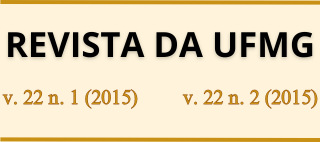Diverse Universe
DOI:
https://doi.org/10.35699/2316-770X.2015.2747Keywords:
Biodiversity, Complexity, SimplicityAbstract
Diversity is trivial in the universe. Even the most casual observer is able to perceive the triviality of certain physical and biological objects. Understanding the causes of diversity is a completely different matter. Curiosity and doubt are the ingredients that feed the will to know, though will is not enough: it must come along with theories to guide the acquisition of scientific knowledge. Not that this knowledge is superior to common sense; it is just different. The difference is that we cannot trust our senses to understand complex problems from a scientific perspective. Theory allows us to refrain from the torrent of information we receive visually so that we can capture the simplicity underlying the phenomena that seem complex. Complexity is hardly understood through theories or complex models. Fortunately, we may expect simple solutions and generalizations that can be obtained by the analysis of a particular phenomenon expressed through similar occurrences, which are repeated at different spatial and temporal scales. The occurrence and distribution of biodiversity on our planet is expressed through patterns. The description of such patterns is the first step to understand biodiversity. Then it is necessary to investigate which factors are responsible for these expressed patterns.
Downloads
References
ANTUNES, L. C. M. A microbiota humana. Ciência Hoje. 2014, n. 316, p. 27- 29.
COUTINHO, F. A. et al. Construção de um perfil conceitual para o conceito de vida. Investigações em Ensino de Ciências. 2007. v. 12, n. 1, p.115-137.
GILBERT, L.E. Food web organization and the conservation of neotropical diversity. In: M. E. SOULÉ; WILCOX, B.A. (eds). Conservation Biology - An evolutionary-ecological perspective. Sinauer Associate, Sunderland, Massachussets, 1980.
GIMGERICH, P. Quantification and comparison of evolutionary rates. American Journal of Science, 1993, v. 293-A, p. 453-478.
HOLLAND, J.H. Hidden order: how adaptation builds complexity. New York, Helix Books, 1996.
IGLESIAS-RIOS, R & MAZZONI, R. Measuring diversity: looking for process that generate diversity. Natureza & Conservação. 2014. v. 12 n. 2, p. 156-161.
LALAND, K. et al. Comments. Nature , 2014, v. 514, p. 161-164.
LEWINSOHN, T. M.; PRADO, P. I. Biodiversidade Brasileira: síntese do estado atual do conhecimento. São Paulo Editora Contexto, MMA, Conservation International do Brasil, 2002.
LUISI, P.L. About various definitions of life. Origin of Life and Evolution of Biosfere 28(4-6): 613-622, 1998.
MacARTHUR, R.H. Population ecology of some warbles species of northeastern coniferous forest. Ecology 39: 599-561, 1958.
MARTINI, B; RIBEIRO, C. G. Antropoceno: a época da humanidade? Ciência Hoje 283: 38-42, 2011.
MARTINS, R. P. Teorias. In: MARTINS, R. P.; MARI, H. (eds). Universos do conhecimento. Belo Horizonte, Editora Faculdade de Letras da UFMG, 2002, p. 91-115.
MOROWITZ, H. J. The emergence of everything - How the world become complex. Oxford, Oxford University Press, 2002, 209 p.
MITTERMAYER, R. Megadiversity: Washington D.C. Earth’s Biologically Wealthiest Nations. Conservation International, 1998.
NAEEM, S.Species redundancy and ecosystem reabilitiy. Conservation Biology 1998 v. 12 n.1, p. 39-45.
OLIVEIRA, A. L. Universo. In: MARTINS, R. P.; MARI, H. (eds). Universos do Conhecimento. Belo Horizonte, Editora Faculdade de Letras da UFMG, 2002, p. 117-148.
PAINE, R.T. Food web complexity and species diversity. American Naturalist. 1966. v. 100, n. 910, p. 65-75.
PICKETT, S. T. A. et al. Ecological Understanding: the nature of Theory and The theory of Nature. Elsevier, New York, 2007.
PRICE, P. W. Species interactions and the evolution of biodiversity. In: C. M. HERRERA and O. PELLMYR, eds. Plant-animal interactions: an evolutionary approach. Oxford, Blackwell Science, 2002. p. 3-25.
ROBERTS, A. Evolution - The human story. London, Dorling Kindersley Limited, 2011.
SUGIHARA, G.; MAY, R. M. Applications of fractals in ecology. Trends in Ecology & Evolution. 1990, v. 5, p. 79-86.
THOMPSON, J. N. The role of coevolution. Science, 2012. v. 335, p.410-411.
WEISS, K. et al. How are we made? Evolutionary Anthropology 2015, v. 24, p. 130-136.
WRAY, G.A et al. Comments. Nature 2014, v. 514, p. 161-164.
ZARET, T.; PAINE, R. T. Species introduction in a tropical lake. Science 1973, v. 182, p.449-455.




